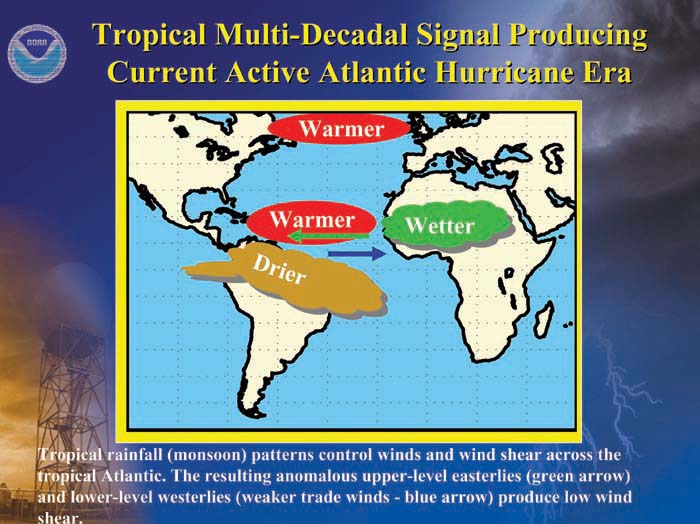 |
 |
 |
 |
 |
 |
 |
Global Warming: Effect on Coastal Regions
Written by
YeSeul Kim, Erika
Granger, Katie Puckett, Cankutan Hasar,
and Leif Francel
and Leif Francel
Effect
on Coastal Regions
People
Moved Inland or Away from Coastal Areas
After Hurricane Katrina, August 2005, people
had no chance
but evacuate the City of New Orleans and Louisiana to many different
states of
United States, mainly inlands such as Texas, Arkansas. The immediate
effect of
Katrina on
|
January 05 |
October 05 |
January 06 |
July 06 |
|
463,000 |
93,000 |
174,000 |
214,000 |
|
100% |
20% |
38% |
46 |
Figure 1
According to the chart, there seem to be
lots of people
coming back to
Increase
in Ocean Temperature in
Due to Global Warming, it has been detected
that the
temperature of the water in
Zhu H. Ning, and Kamron Abdollahi mentioned in the article Gulf Coast Regional Climate the biggest warming in United States occurred in Gulf Coast region so that in the graphs below, Gulf Coast area has the most grey color in Figure 2 and it is predicted to be the place the temperature will increase significantly that it reflects by the color red and orange (2006).


Two predicted future
of
According to the National Oceanic &
Atmospheric Administration
(NOAA), hurricanes need warm water to get as strong and severe as
Hurricane
Katrina was on the
Another point to mention is the fact that hurricanes get weaker when they reach lands and lose their connection with warm water, according to NOAA (2005). Since coastal regions are the ones first meet with the hurricanes, they face the worst and harshest part of the conditions of damages made by hurricanes.

NOAA (2005) URL: http://www.magazine.noaa.gov/stories/mag184.htm







